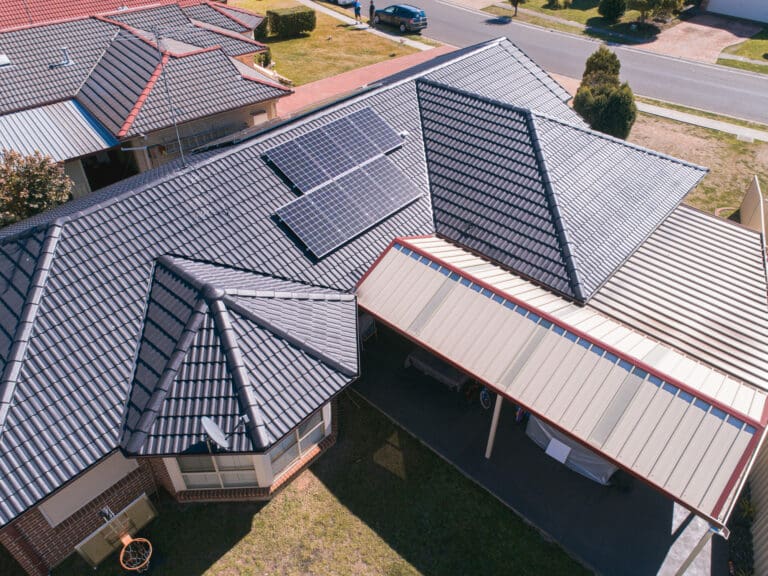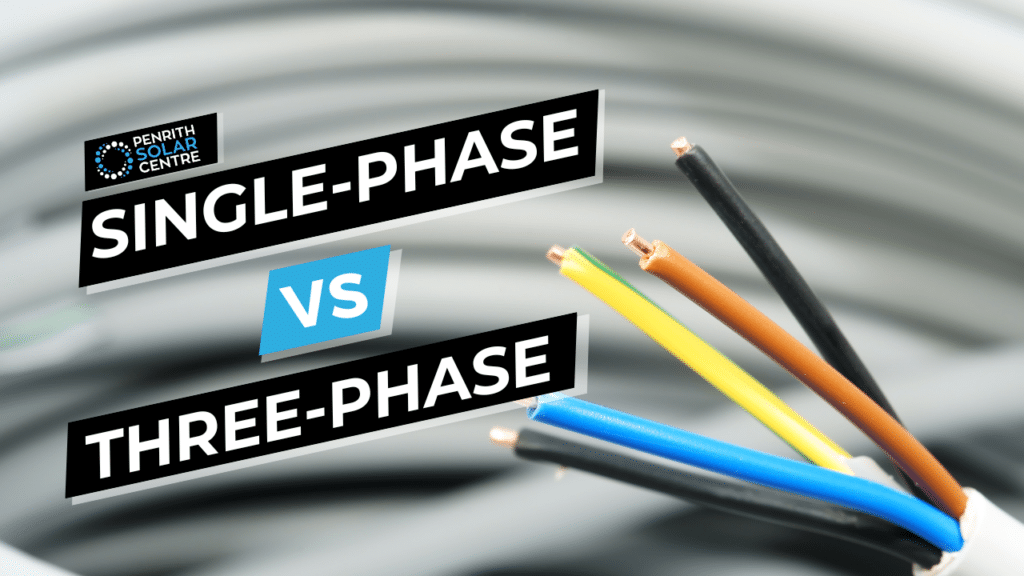
When potential customers call us for a quote, after exchanging pleasantries, we ask whether you know if your home is single-phase or three-phase in the way it’s connected to the electrical grid. If you’re anything like me, this is right about where you check out and start thinking about last night’s Married at First Sight. Why, oh why, is this technical information so important?
At Penrith Solar Centre, we pride ourselves on the fact that we’re a company of electricians. Our founder, Jake Warner, is a licenced electrician. We have them in every department company wide. We are in the business of electricity, it’s what we do and it’s what we know. We’re here to guide you through every decision you make regarding solar system installation. In the spirit of that, we’re going to explain why and how single-phase and three-phase connections are different.
In this article, you will learn:
- What is the Difference Between Single-Phase and Three-Phase Connections?
- Single-Phase and Three-Phases in Australia
- What is a Frequency in Single-Phase and Three-Phase Connections?
- What is a Single-Phase Electricity Power Supply?
- What is a Three-Phase Electricity Power Supply?
Single-phase and three-phase systems are a complex and technical subject that requires math and science to understand fully. By the time you finish this article, you’ll get a basic understanding of what these terms mean and how it applies to you.
Additionally, you’ll know enough to make conversation at a cocktail party full of electricians. No idea how many of them it takes to screw in a lightbulb though.
What is the Difference Between Single-Phase and Three-Phase Connections?
Single-phase power is a two-wire alternating current (AC) circuit. It typically consists of one active wire and one neutral wire. Current flows between the active wire (through the home and appliances) and the neutral wire.
Three-phase power is a three-wire AC circuit that consists of three active wires and one neutral wire. Again, current flows between the active wire (through the home and appliances) and out the neutral wire.
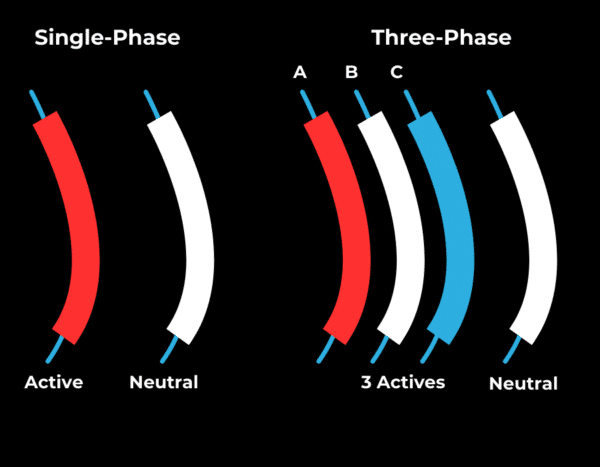
Residential homes in the Sydney metro area more commonly come with three-phase wiring installed these days. It’s also possible to upgrade from single-phase to three-phase wiring (though not required for solar). In some homes, it’s quite simple because the home is already wired for three phases, but only one phase was connected to the grid. We have opinions on that type of work which will be discussed shortly.
Three-phase power supplies are better suited for higher loads. When we use the word “load,” it’s referring to whatever is using the electricity and completing the circuit (even though it’s not always an appliance, which is why we use the word “load”).
The load of a single-phase residence would be the lighting or heating or sometimes something with a large electric motor like air conditioning. However, energy needs have changed for most homes and as we move towards a more sustainable electric future. Three-phase connectivity accommodates for those evolving energy needs.
Single-Phase and Three-Phases in Australia
Okay, this next bit has some pictures that are going to be helpful in understanding the difference between single-phase and three-phase. The pictures should make visualising the rest of the article easier.
Single-phase means you have 2 wires coming from the street, an active wire and a neutral wire.
As an alternating current, a single-phase power supply changes polarity 50 times every second (because that’s the frequency) (more on frequency in a bit) to give us a 50Hz AC sinusoidal wave. It looks like this:
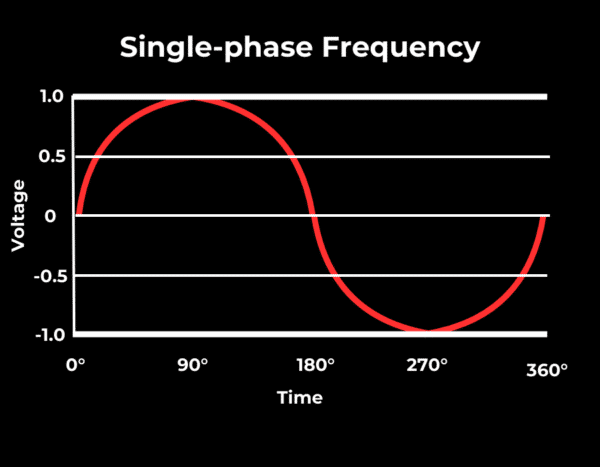
To simplify, in a single-phase supply, the energy flows into your home via the active wire to your appliances. That same energy returns via the neutral wires to complete the circuit.
A three-phase supply has 4 wires, 3 separate active wires and a neutral wire (same as a single-phase house).
The difference is that the frequencies of the three active wires are staggered from each other.
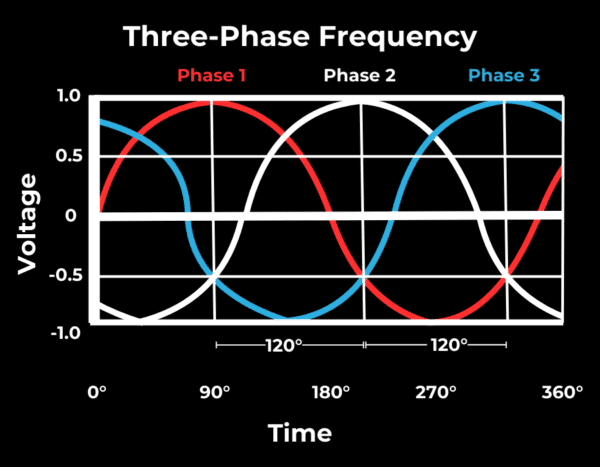
The frequency of each wave is 50Hz. When the waves are staggered like the above graphic, the result is a more consistent and stable power delivery.
With a phase difference of one third of a cycle (the 120° difference each wave is out of phase) between each. The reason that there is 120° displacement between the phases is that 360°/3 is 120°.
Due to the phase difference, the voltage being pushed through a wire reaches its peak at one third of a cycle after one of the other wires and one third of a cycle before the remaining wire. This phase delay feeds a steady power supply to a load.
We are now ready to talk about “frequency.”
What is a Frequency in Single-Phase and Three-Phase Connections?
The above images of sinusoidal waves show the frequency of single-phase and three-phase connections. Wires in either type of connection carry an alternating current of the same frequency (50Hz in Australia).
Electricity is created at a power-generating station where fossil fuels like coal or oil are burned to produce high-pressure steam. This intense heat powers a turbine, a machine with blades attached to a shaft, reminiscent of an old-fashioned water wheel. The spinning turbine — connected to a motor — rapidly rotates the magnets attached to it.
This kinetic energy forms a magnetic field with the spinning turbine/magnets. When this magnetic field interacts with a conductive material like copper wire, the electrons within the wire become agitated.
The movement of electrons from one atom to another in a single direction, from negative to positive, results in a direct current (DC). However, power station generators generate an alternating current (AC) where electrons oscillate rapidly back and forth between atoms, alternating their direction.
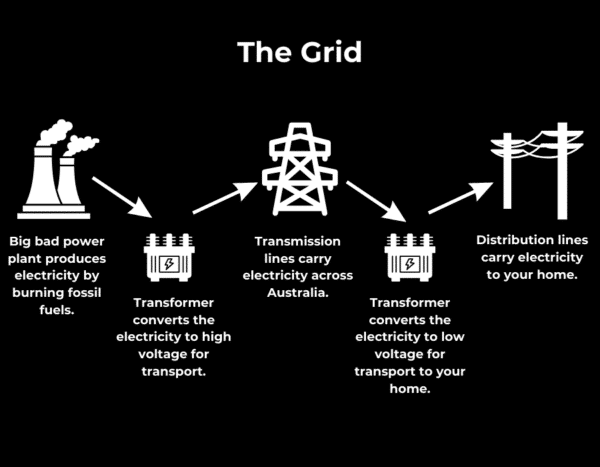
The electricity produced by generators travels to transformers, increasing the voltage for city-wide distribution. It traverses high-voltage transmission lines, either overhead or underground, likely reaching a substation where voltage reduction occurs for delivery to homes. This electricity travels through distribution lines to your service and consumers mains, then to your main switchboard, which is then useable in your home.
The electrons that are wiggling back and forth very rapidly release energy. This released electricity is what moves forward through the circuit.
Consider the ocean: think of the vibrating electrons as the water and electricity as the waves. The wave has no matter, the water does.
This is frequency. And it’s important. If you have a record player, you need it to rotate the album at the right speed. If the grid wasn’t keeping the frequency at 50Hz, but really 50 to 55Hz…you would hear it. The record would sound distorted as the frequency changed.
What is a Single-Phase Electric Power Supply?
Number of Conductors:
Single-phase systems have two conductors – one active wire and one neutral wire.
Voltage: 230 volts
Voltage is measured between the active and neutral wires and is typically 230 volts in residential applications.
Applications:
Suited for lighting, small appliances, and most home electrical devices.
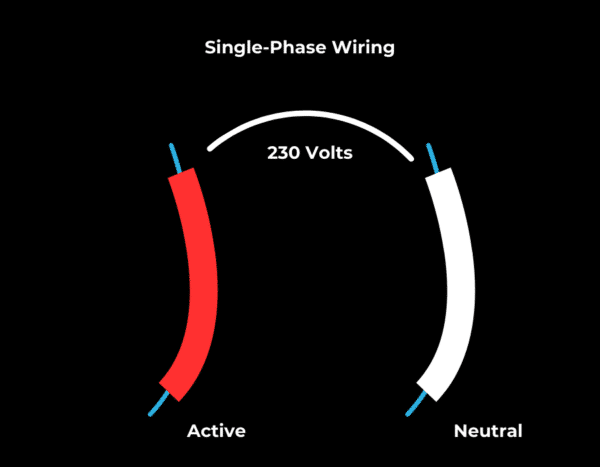
Learn more about single-phase!
What is a Three-Phase Electric Power Supply?
Number of Conductors:
Three-phase systems have three conductors – three active wires and one neutral wire.
Voltage: 400 volts
Voltage is measured between any two of the three active wires, and it is typically 400 volts in residential settings.
Applications:
Suited for heavy loads, large motors, and other high-power applications. Appliances that require a lot of power will often split the requirements across all three phases to balance the load. A three-phase air conditioner is a perfect fit for a three-phase building.
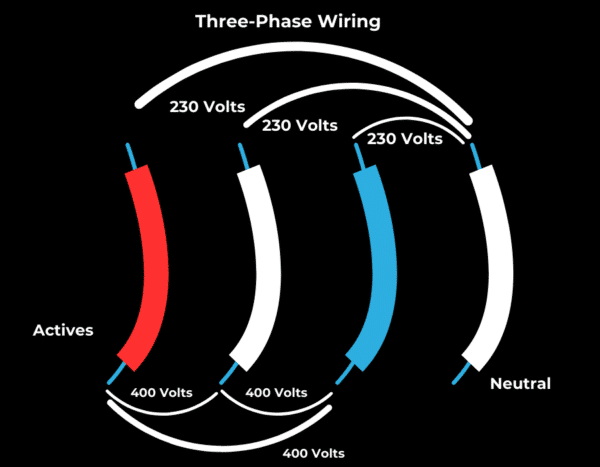
Presently, approximately half of the homes in the Sydney metro region have three-phase power, while the other half rely on single-phase systems. Surprisingly, only about 10% of clients are aware of their power phase type.
The frequency of the power supply affects the design of electrical equipment, the performance of motors and generators, and the synchronization of interconnected power systems. But to explain that is all very technical information that you don’t need. What matters is that the good folks at Penrith Solar Centre do understand it.
At Penrith Solar, we strictly install three-phase systems for three-phase houses and single-phase systems for single-phase houses. We never install a single-phase solar system on a three-phase house. Some solar installers make this mistake (and some even do it to save money and cut corners), but it’s a terrible (and potentially dangerous) thing to do. Maintaining the integrity of the grid without straining it is our responsibility. Installing a single-phase system on a three-phase house is bad practice, especially for managing voltage rise.
It is possible to upgrade your home from single-phase to three-phase, but that’s another article.
If you’re interested in learning more about voltage rise, you might want to check out the following article titled, Everything You Need to Know About Voltage Rise.
What happens when someone slaps you at a high frequency? It hertz.
Now that you understand the basics of how single-phase and three-phase connections work and how they are different from one another, you are empowered to ask your solar installer about how this consideration affects your installation.
At Penrith Solar Centre, we work with you and your specific energy needs to get you set up with a system that will work for you. How you are connected to the grid and why it’s important will change from one household to the next.
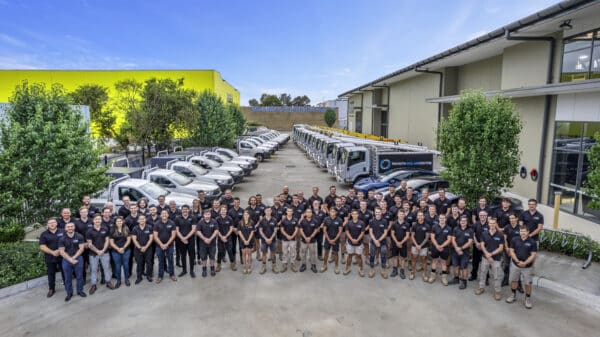
If you’re interested in learning more about how your installer will affect your solar system even after it’s installed, you might want to check out the following article titled, In-house Installers vs. Subcontractors: Which is Better?


